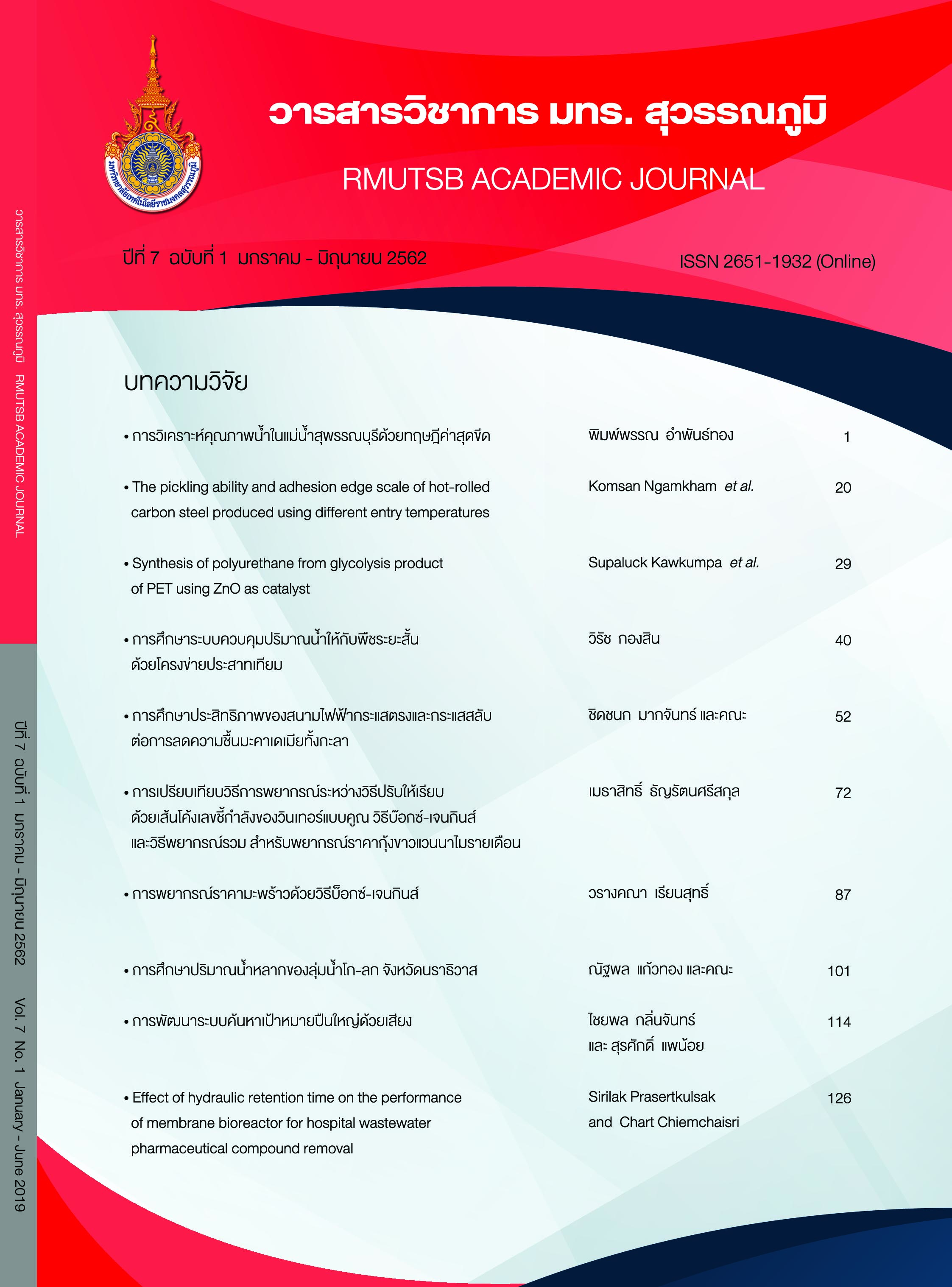Development of Artillery Sound Ranging
Main Article Content
Abstract
The goal of this research was to develop the sound ranging system for supporting an operational strategy implementation. The system used target detection method from an artillery sound source of an opponent without wave diffusion, and used the results of the detection calculation to guide the target searching device. This method resulted in fast and accurate attacks and could be used as a battlefield surveillance as well. The study used a calculation of artillery sound coordinate which was conducted by a signal’s difference value approximation at a time when it reached the sound sensors. This method is called Time Difference of Arrivals (TDOA). The research was conducted as the followings: 1) developed a device for receiving artillery sound signals which consisted of 6 audio receivers, 2) developed a device for sending artillery sound signals via a military very high frequency (VHF) radio, and 3) developed a coordinates artillery sound application with higher accuracy by using data from meteorological measurement devices.
The experiments were conducted in the artillery center, Lopburi province, which was in the middle of the mountain with height less than 400 meters. The accuracy of the calculations was enhanced by using meteorological measurement results from airborne instruments. The results from the simulating field examination showed that the system range detection’s accuracy was 600 meters in average, could be operated for 48 hours, and covered the front area for 10 square kilometers. The evaluation result by experts revealed that the system was completed and reliable.
Article Details
Published manuscript are the rights of their original owners and RMUTSB Academic Journal. The manuscript content belongs to the authors' idea, it is not the opinion of the journal's committee and not the responsibility of Rajamangala University of Technology Suvarnabhumi
References
เชิดพงษ์ จอมเดช, และอาษา ประทีปเสน. (2549). หัวตรวจสอบอุคูสติกอีมิสชั่นแบบเรโซแนนซ์ โดยใช้เพียโซอิเล็กทริกเซรามิกส์ผลึกเดีย (คุณลักษณะและคุณสมบัติในการตรวจสอบ). วารสารวิจัยและพัฒนา มจธ, 29(4), 483-498.
ชมพล อามระดิษ. (2550). การปรับโครงสร้างระบบการส่งกำลังบำรุงของกองทัพบก ศึกษาเฉพาะกรณี กองทัพภาคที่ 1 (ภาคนิพนธ์ปริญญามหาบัณฑิต). มหาวิทยาลัยธรรมศาสตร์, กรุงเทพฯ.
นราเทพ พฤกษหิรัญ. (2557). ความรู้เบื้องต้นเกี่ยวกับเทคโนโลยีเรดาร์ SAR (Synthetic aperture radar). นครนายก: โรงเรียนนายร้อยพระจุลจอมเกล้า.
Baluta, S., & Andrei, G. (2012). Determining the coordinates of a hostile gunfire by using the sound ranging method. In Proceeding of the International Conference of Scientific Paper AFASES (pp. 637-640). Brasov, Romania: Association for research and education.
Fear, E. C., Meaney, P. M., & Stuchly, M. A. (2003). Microwaves for breast cancer detection?. IEEE Potentials, 22(1), 12-18.
Gillette, M. D., & Silverman, H. F. (2008). A linear closed-form algorithm for source localization from time-differences of arrival. IEEE Signal Processing Letters, 15, 1-4.
Potluri, S. (2002). Hyperbolic position location estimator with TDOAS from four stations (Master’s thesis). New Jersey Institute of Technology, USA.
Schermerhorn, E. (2015). Sound source localization using a 2D acoustic vector sensor (Research report). Netherlands: University of Twente.
Sterling, C. H. (2008). Military communications: from ancient times to the 21st century. California: Santa Barbara.
Talbot-Smith, M. (2000). Sound engineer’s pocket book (2nd Ed.). USA: Focal Press.
Wu, S. F., & Zhu, N. (2013). Passive sonic detection and ranging for locating sound sources. J Acoust Soc Am., 133(6), 4054-4064.


